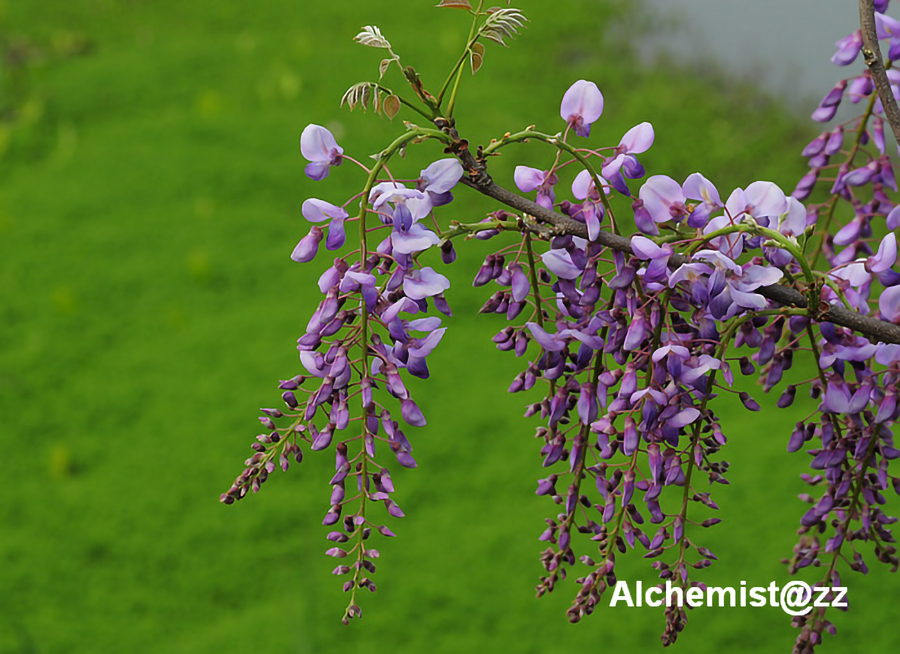- Scientific Name: Wisteria sinensis (Sims) Sweet
- Ref: Hort. Brit. 121. 1826.
- English Common Name: Chinese wisteria
- Chinese Common Name: 紫藤 zǐténg
- Family: Fabaceae
- Genus: Wisteria
- Distribution: Mountain forests; 500-1800 m. Anhui, Fujian, NE Guangxi, Hebei, Henan, Hubei, Hunan, Jiangsu, Jiangxi, Shaanxi, Shandong, S Shanxi, Zhejiang [Japan]. cultivated extensively in areas beyond its native range.
Lianas, to 25 m. Stems twined leftward, white villous when young, soon glabrescent. Leaves 7-13-foliolate; rachis 15-25 cm, including petiole 3-5 cm; leaflet blades elliptic-ovate to lanceolate-ovate, 5-8 × 2-4 cm with basal pair smallest and becoming larger apically, both surfaces appressed pubescent when young but glabrescent, base rounded to cuneate and somewhat asymmetric, apex attenuate to caudate. Racemes terminal or axillary from branchlets of previous year, 15-30 × 8-10 cm, white villous. Pedicel 2-3 cm, slender. Flowers 2-2.5 cm, fragrant. Calyx with adaxial tooth longer than others. Corolla purple or occasionally white; standard orbicular, sometimes retuse, glabrous, apex truncate. Ovary tomentose, with 6-8 ovules. Legume oblanceolate, 10-15 × 1.5-2 cm, tomentose, hanging on branches persistently. Seeds 1-3 per legume, brown, thickly lenticular, ca. 1.5 cm in diam., shiny. Fl. Apr-May, fr. May-Aug. 2n = 16. (Flora of China)
